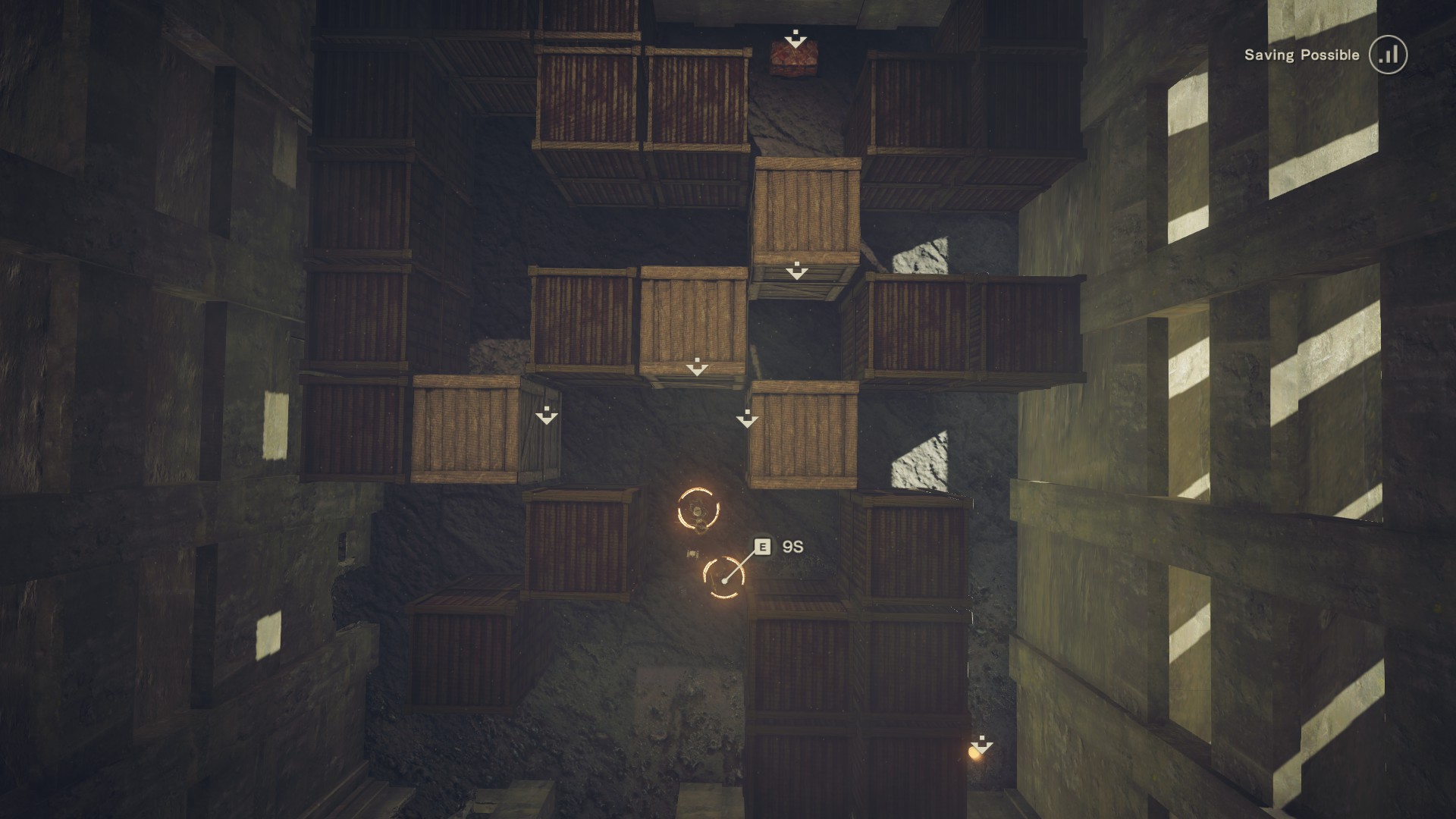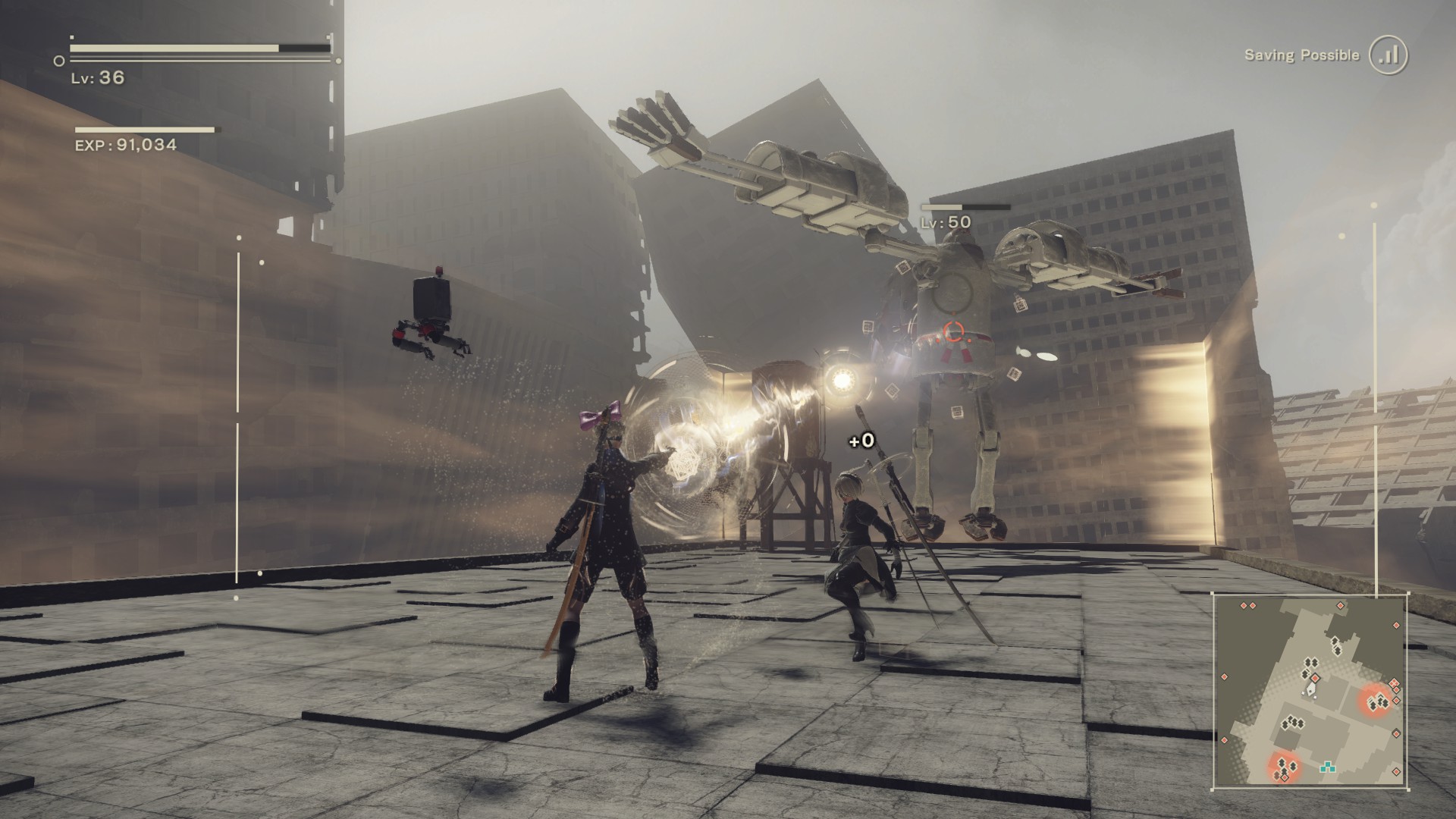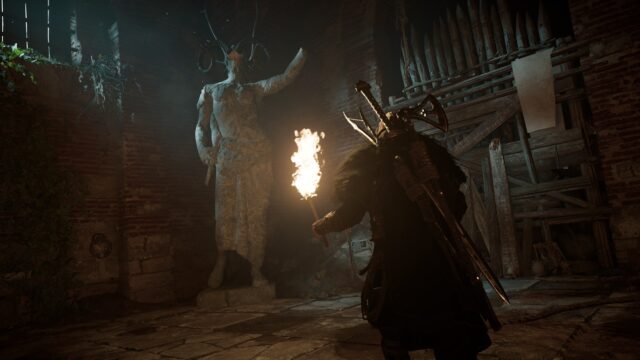NieR: Automata Review
In one corner of NieR: Automata lives my favorite character. It’s a clueless robot that entertains the malicious crowd by repeatedly choosing the coin with the lowest denomination from the ones offered – the “coolest” one. There is never a shortage of people wanting to gawk at the defective tin can, and the poor thing, apparently, doesn’t even suspect that the onlookers are openly mocking him.
And only through close acquaintance can one find out that he is not as clueless as he seems. Quite the opposite, in fact: being capable of performing complex calculations, he cleverly realized that pretending to be foolish is more advantageous. Who in their right mind would give him money for nothing? In the current situation, everyone around is having so much fun that they don’t even notice how they part with substantial sums. Genius, they call it, at work.

Surely, in the months that have passed since the release, a similar analogy has already been heard somewhere, but this robot deserves attention primarily because it resembles NieR: Automata itself – a game that is actively pretending to be a joy to the average person. From the outside, it’s just a silly slasher in a short anime skirt, luring with tons of provocative fan art, in which it happily bathes. Come closer, they say, everything here is simple and familiar.
In reality… Well, no other game has deceived me like this, while at the same time being much more intriguing and vibrant than promised. It’s a book with a thousand covers, and before judging even one, you need to see them all.
The first hours of the story of android schoolchildren fighting mechanical invaders for the bright future of a dying Earth do not evoke any excitement. And it’s understandable: in modern Japanese culture, it’s probably harder to find examples where teenagers don’t save the world, and at first, NieR: Automata gives little reason to doubt that the plot here is just an addition to the slasher. A badass one, as is customary for PlatinumGames, albeit less complex than the recently arrived PC version «Bayonetta».

The combat system consists of brief sequences of light and heavy strikes, evasions, shooting with the help of a drone companion, and a situational superpower of choice. The mechanics are extremely simple, but dynamic and, most importantly, tangible: each attack still feels powerful, and no complicated combo moves were required for this.
Honestly, the absence of the latter is not noticeable at all. Partly because there are still plenty of opportunities for personalizing the combat style – from chips that adjust the parameters of the heroes to a variety of weapons – but mostly thanks to the fact that the game never stops changing for a second.
NieR: Automata only needs one camera movement to turn into a well-crafted twin-stick shooter. Another pirouette – and elements of a platformer are mixed into the non-stop action. Soar into the air – and you’re playing a classic scrolling shooter. The rules change slightly – and it becomes a danmaku puzzle. Or a parkour racing game. Or anything, really. What happens on the screen can look like this with equal probability:

Or like this:

The gameplay here, despite its apparent simplicity, constantly balances on the border of genres and takes advantage of all their merits, while firmly standing on a slasher foundation. Such behavior may seem strange for a long time, but this is where the charm of the game lies – it knows how to surprise and is not afraid to use its abilities. The original NieR also played with similar tricks, but the game design here is much more inventive and, thanks to Platinum, more elegant.
Surprisingly, the author’s talent was also enough for the sandbox. The wonderful world of NieR: Automata is filled with side activities that are no less developed or important than the story episodes, so the interest in exploration does not diminish until the very end. There are no complex life simulations, advanced algorithms, or non-linearity here – it is a static picture, but it is filled with such pleasant details that you cannot deny its authenticity, no matter how much you want to.
Because of this, even the inherently Asian love for grinding everything in sight is not so obvious. There are plenty of resources here, and even more are required for upgrades, but at least two-thirds of the necessary loot is collected during active running around and completing various tasks.

Well, what’s wrong with you, have you never seen Japanese games?
Perhaps it is creativity that holds attention while the authors leisurely cast their script hooks. In the non-stop game carousel, it is unlikely that one can pinpoint the exact moment when NieR: Automata transforms from an Eastern waifu and katana action game into a serious drama, but ultimately, it is impossible not to notice that the robots you were just cutting into gears suddenly start talking about love and the meaning of life.
Questions of existence, artificial intelligence, emotions, consciousness, societal ideas, politics, religion, freedom, and a dozen other philosophical concepts suddenly take center stage. This is what the witty sketches in the pale-brown exterior but immensely beautiful interior open world are about, where amusing balls play at being humans, and this is what the main storyline of androids 2B, 9S, and A2 is about. This is the true NieR: Automata in all its magnificence. This is what one wants to discuss for hours, to clumsily go through all the touched-upon themes and illustrate them with colorful examples so that everyone understands why it is worth loving. But as much as one would like to, more has already been said than necessary, and delving into specifics would mean spoiling the grand surprise prepared for the curious and patient player. This path is truly worth traversing on one’s own.

I, to be honest, didn’t plan on buying it at all. And somehow, after 50 hours, NieR: Automata moved from the category of “just for an evening” to the category of those games that make my acquaintances sick of hearing about and that have permanently settled on my hard drive, despite the fact that I’ve played them inside out and only launch them once every two months for a couple of favorite moments. And I won’t lie, I’ve lost count of how many times I’ve listened to the amazing soundtrack of “Automata,” but Martin O’Donnell with his brilliant compositions for Halo should start worrying.
God knows what Yoko Taro puts into his creations, but he has made it clear about modern blockbusters: they struggle to be games. For them, it’s a burdensome task, the necessity to entertain their audience for a solid forty hours, spread out over cloying mechanics. Many of them could have been a movie, a book, or a webcomic, without losing anything, and in some cases even gaining something.

Not NieR. It is a real game that truly wants to be one and squeezes everything it can out of its format. Here, every element contributes to the overall picture, creating an amazing masterpiece where eternal, mature themes coexist with achievements for peeking under the skirt of the main heroine, where sincere tears and laughter, indignation and joy all come together. NieR: Automata is a profound reflection of gaming and life experience, a powerful catharsis that is unexpected and touches the depths of the soul. And, equally important for a product in the entertainment industry, it evokes genuine curiosity that makes you press the “New Game” button three times and leads you literally to the last frame of the final credits, accompanied by a beautiful song, taking you on a journey with one of the best games in history.
It is not a genre breakthrough like Half-Life or Baldur’s Gate were in their time, but it sets a standard for creative courage for the industry as a whole. Games are increasingly forgetting what it means to be games, and in turn, we are gradually losing sight of the reasons why we consider games to be art. With NieR: Automata, we now have a weighty reminder that will last for many years to come.
Share
Discuss
More Reviews





